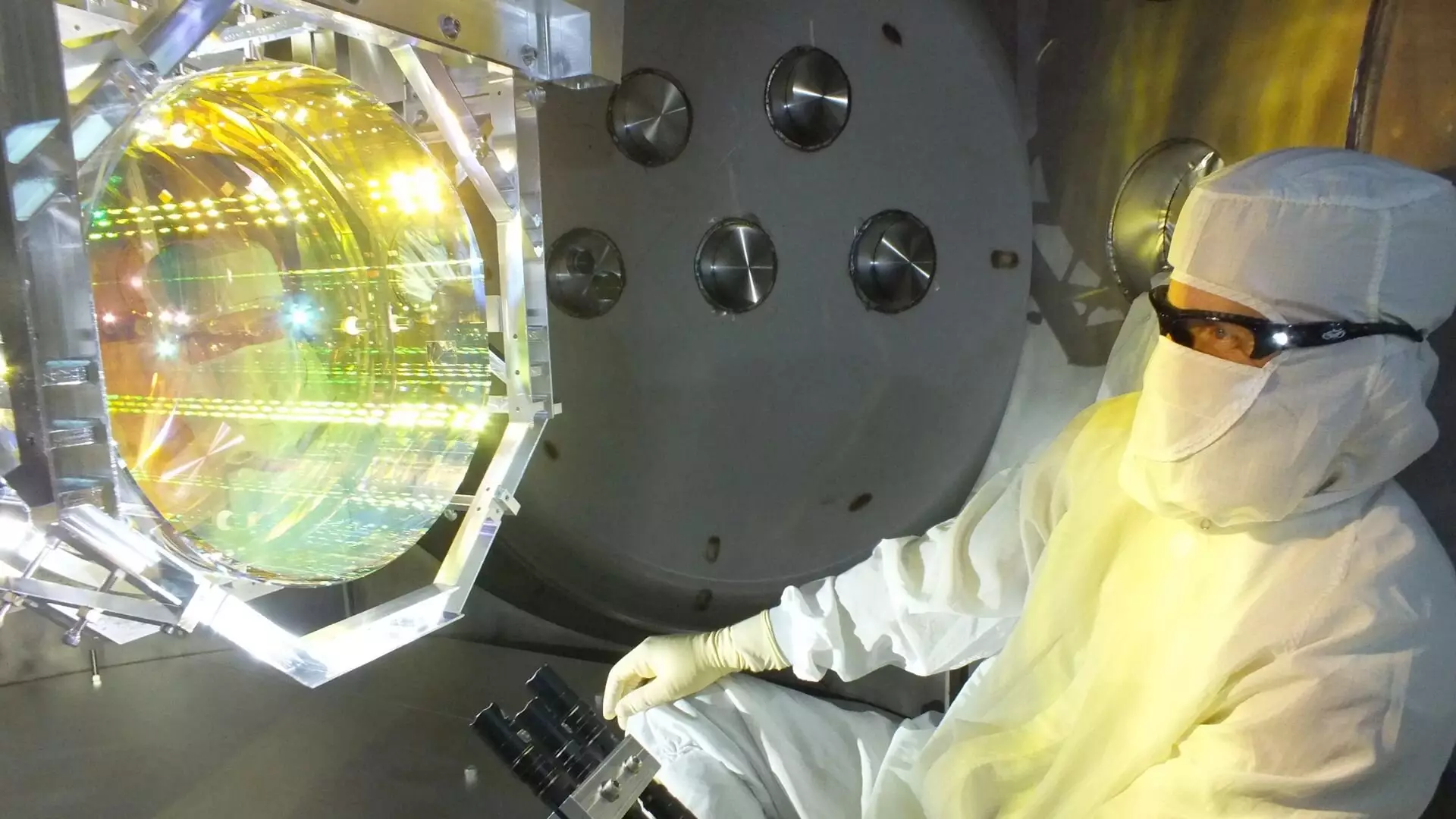Dark matter serves as one of the most mysterious components of our universe, making up around 30% of its total mass. Unlike ordinary matter, dark matter does not interact with electromagnetic forces; it neither absorbs, emits, nor reflects light. As a result, it remains invisible and can only be detected through its gravitational influence on galaxies and cosmic structures. Scientists have long been intrigued by the nature of dark matter, a pursuit that has yielded few conclusive findings despite an array of experimental attempts. A recent study published in Physical Review Letters has shed new light on this elusive substance, particularly focusing on a type known as scalar field dark matter.
The innovative study, spearheaded by Dr. Alexandre Sébastien Göttel from Cardiff University, utilizes gravitational wave detectors, such as the Laser Interferometer Gravitational-Wave Observatory (LIGO), in an attempt to identify scalar field dark matter. Dr. Göttel’s transition from studying solar neutrinos in particle physics to gravitational wave analysis marks a significant interdisciplinary endeavor where theoretical physics meets cutting-edge experimental technology. He expressed optimism about leveraging his particle physics background to contribute to dark matter research through gravitational waves: “The opportunity to search for dark matter with LIGO seemed like the ideal way to apply my expertise in both areas while learning more about interferometry.”
Gravitational waves are subtle ripples in spacetime created by massive celestial events, such as merging black holes or neutron stars. LIGO employs highly sophisticated laser interferometry, with two long arms positioned at right angles. When a gravitational wave passes, it causes one arm to elongate while the other contracts, resulting in a change in the time it takes for laser beams to travel along each arm. The differing travel times create observable patterns of interference, allowing scientists to detect these elusive waves.
In this recent study, the team turns its focus to scalar field dark matter, theorized to consist of ultralight scalar bosons that could interact weakly with both normal matter and light. These scalar bosons possess unique properties, as they lack intrinsic spin and can exhibit behaviors akin to waves, forming stable structures that can propagate through spacetime without fragmenting. This fundamental trait heightens the feasibility of using LIGO to search for gravitational interactions thought to be caused by scalar field dark matter.
Within the framework of the study, Dr. Göttel and his team developed a model to predict how scalar field dark matter might interact with components of LIGO, particularly the beam splitters and mirrors within the interferometer. Their approach took into account not only how dark matter may affect the detectors directly but also how oscillations in the dark matter field could alter fundamental constants that govern electromagnetic interactions. Essentially, fluctuations in the oscillations provide valuable insights into how the presence of scalar field dark matter might manifest in experimental data.
Through simulations, the researchers attempted to characterize this potential signal, enabling them to target specific anomalies in LIGO’s data. They applied logarithmic spectral analysis to identify patterns corresponding to the predicted effects of scalar field dark matter, offering a methodological framework for evaluating data moving forward.
Despite the lack of direct evidence for scalar field dark matter in the LIGO data examined during the third observation run, the research yielded noteworthy advancements. The team set new upper limits on the interaction strength between dark matter and the LIGO components, improving the coupling strength threshold by a staggering factor of 10,000 compared to previous studies. This enhancement not only underscores the sensitivity of LIGO but suggests a future where gravitational wave observations could offer more compelling insights into dark matter’s nature.
Dr. Göttel emphasized the importance of their findings, noting, “We are the first to account for additional differential effects in the test masses, which are significant at low frequencies.” This deeper understanding of interactions at the atomic level opens new avenues for experimental designs, potentially influencing the engineering of future gravitational wave detectors capable of detecting scalar field dark matter.
The implications of this research extend far beyond a singular attempt to detect dark matter; it lays the groundwork for a comprehensive understanding of how dark matter might manifest in various contexts and how future experiments could improve upon existing methodologies. Notably, small adjustments in mirror configurations could lead to significant improvements in detection capabilities.
In summation, this innovative approach signifies a promising step forward in unraveling the secrets of dark matter, capturing the interest of both theoretical and experimental physicists as we continue to explore the universe’s most enigmatic constituents. Future advancements may well have the potential to not only rule out entire classes of scalar field dark matter theories but to fundamentally alter our understanding of the cosmos.

